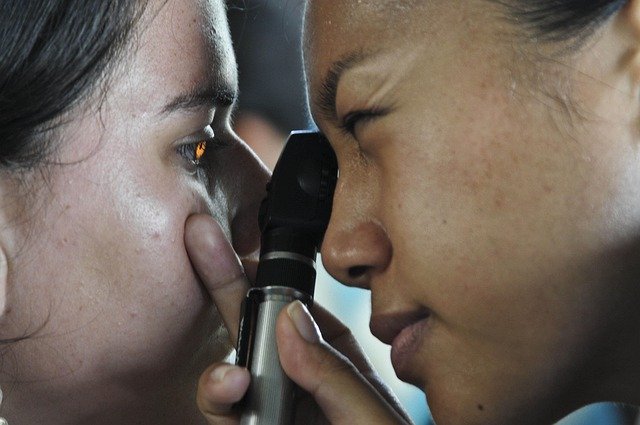3 Ocular Migraine Signs That Often Go Unnoticed
Ocular migraines can be a perplexing and sometimes frightening experience, often catching sufferers off guard with their unique symptoms. While many are familiar with the intense headaches associated with traditional migraines, ocular migraines present a different set of challenges that may go unrecognized. Understanding these subtle signs is crucial for early detection and proper treatment. This article delves into three commonly overlooked indicators of ocular migraines, providing valuable insights for those who may be experiencing these symptoms without realizing their significance.

What exactly is an ocular migraine?
An ocular migraine, also known as a retinal migraine, is a type of migraine that primarily affects vision. Unlike traditional migraines, ocular migraines may or may not be accompanied by head pain. They are characterized by temporary visual disturbances that can occur in one or both eyes. These episodes typically last for a short period, usually less than an hour, but can be quite disruptive to daily activities. Understanding the nature of ocular migraines is the first step in recognizing their often subtle signs.
How does visual aura differ from regular eyesight changes?
Visual aura, a common symptom of ocular migraines, is often mistaken for ordinary eyesight fluctuations. However, there are distinct differences. Visual auras associated with ocular migraines typically manifest as shimmering lights, zigzag lines, or blind spots that gradually expand across the visual field. These disturbances are often more pronounced and patterned than the occasional blurriness or floaters one might experience. Recognizing the unique characteristics of visual aura can help individuals differentiate between normal vision changes and potential ocular migraine symptoms.
Can ocular migraines occur without headache pain?
One of the most frequently overlooked aspects of ocular migraines is that they can occur without the traditional headache pain associated with migraines. This absence of pain often leads individuals to dismiss their visual symptoms as insignificant or unrelated to migraines. However, experiencing visual disturbances alone, such as temporary blindness in one eye or kaleidoscope-like patterns, can be a clear indication of an ocular migraine. Understanding that these visual symptoms can occur independently of head pain is crucial for proper diagnosis and treatment.
Are there any physical sensations accompanying visual symptoms?
While visual disturbances are the primary indicator of ocular migraines, some individuals may experience subtle physical sensations that are often overlooked. These can include a feeling of pressure behind the eyes, mild dizziness, or a sense of disorientation. Some people report a slight tingling or numbness around the eyes or in the face. These physical sensations, though mild, can be important clues in identifying ocular migraines, especially when they occur in conjunction with visual symptoms.
What triggers should individuals be aware of for ocular migraines?
In the United States, where stress levels and screen time are often high, certain triggers for ocular migraines are particularly relevant. Common triggers include prolonged exposure to bright lights or computer screens, lack of sleep, and high stress levels. Dietary factors such as caffeine, alcohol, and certain food additives can also play a role. Being aware of these potential triggers can help individuals better manage their ocular migraine symptoms and potentially reduce the frequency of episodes.
When should someone consult a doctor about ocular migraine symptoms?
While occasional visual disturbances may not be cause for immediate concern, there are certain situations where medical attention is warranted. If visual symptoms occur frequently, last longer than an hour, or are accompanied by new or severe headaches, it’s important to consult a healthcare professional. Additionally, if ocular migraine symptoms interfere significantly with daily activities or are accompanied by other neurological symptoms like weakness or speech difficulties, immediate medical evaluation is necessary.
For those experiencing ocular migraine symptoms, several treatment options are available. It’s important to consult with a healthcare provider to determine the most appropriate course of action. Below is a comparison of common treatment approaches:
| Treatment Approach | Provider Type | Key Features | Cost Estimation |
|---|---|---|---|
| Prescription Medications | Neurologist/Headache Specialist | Targeted relief, preventive options | $50-$500 per month |
| Lifestyle Modifications | Primary Care Physician | Non-pharmaceutical, long-term management | Minimal direct costs |
| Alternative Therapies | Acupuncturist/Naturopath | Holistic approach, minimal side effects | $50-$150 per session |
| Vision Therapy | Optometrist | Addresses underlying visual issues | $100-$200 per session |
Prices, rates, or cost estimates mentioned in this article are based on the latest available information but may change over time. Independent research is advised before making financial decisions.
In conclusion, recognizing the subtle signs of ocular migraines is crucial for proper diagnosis and management. By understanding the unique visual disturbances, acknowledging that headache pain may not always be present, and being aware of subtle physical sensations, individuals can better identify and address ocular migraines. Paying attention to potential triggers and knowing when to seek medical advice are key steps in effectively managing this condition. With the right approach and professional guidance, those experiencing ocular migraines can find relief and maintain their quality of life.
This article is for informational purposes only and should not be considered medical advice. Please consult a qualified healthcare professional for personalized guidance and treatment.




